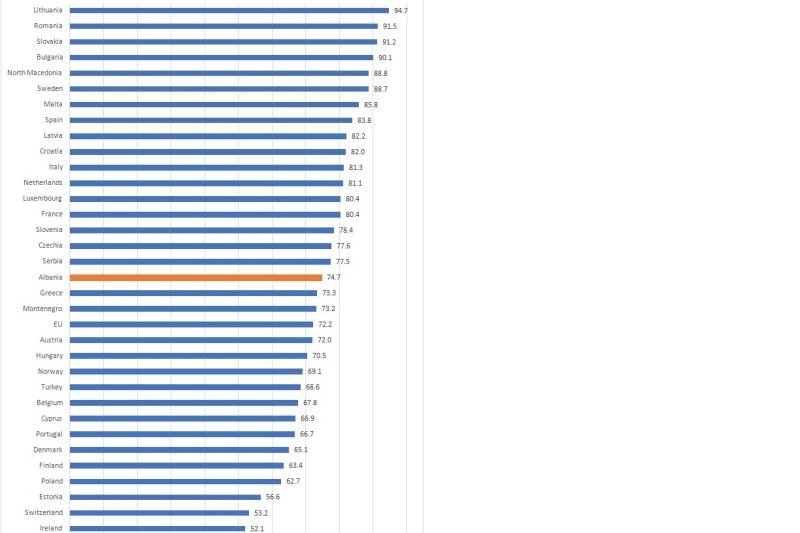Albania, 74.7% of Working-age Population at Risk of Poverty
In Albania, 74.7% of the working-age population is at risk of falling into poverty, as they live in families with low work intensity, Eurostat reported this Thursday.
The European Institute of Statistics clarified that the intensity of work reflects how much all working-age family members have worked compared to their full potential.
In general, the higher the intensity of work within a household (the closer people are to full employment), the lower the probability of being at risk of poverty. Work intensity is indicated with three levels, ranging from very low, medium and very high.
In the EU, the at-risk-of-poverty rate for people aged less than 65 living in households with very low work intensity was 64.0% in 2020.
This rate varied from 48.7% in Denmark and 49.9% in Ireland to more than 70.0% of the population in nine EU member states. It reached a peak of 85.4% in Lithuania, followed by Romania (84.2%) and Latvia (80.6%).
2020 data for the EU shows that employment helped prevent people falling into poverty.
The at-risk-of-poverty rate was 64.0% for people aged less than 65 living in households with very low work intensity compared to 5.3% for people living in households with very high work intensity, while the percentage for people living in families with average work intensity it was 23.6%.
In all EU Member States, a similar pattern was observed, meaning that the risk of poverty decreased as work intensity increased.
Work intensity is defined as the ratio of the total number of months that all family members of working age worked during the reference income year and the total number of months that the same family members could theoretically have worked in the same period.
Work intensity is considered very low when the adults of the household had a working time equal to or less than 20% of their total combined working time potential during the previous year and on the other hand it is considered very high when the time of adult work exceeds 85% of the working time potential.
(Source: Monitor)














